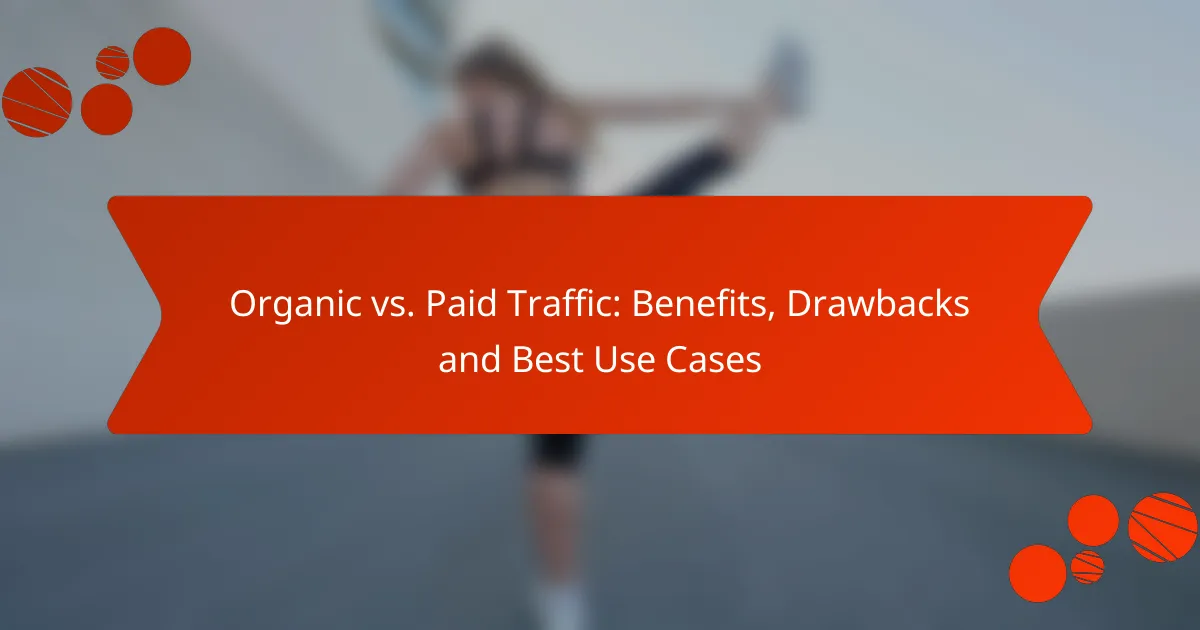In the competitive landscape of digital marketing, mastering SEO techniques is essential for driving organic traffic to your website. Key strategies include effective keyword research to identify valuable search terms, on-page optimization to enhance the structure and relevance of your content, and robust link building to establish authority and improve visibility. By implementing these techniques, you can significantly boost your site’s performance in search engine results.

What are effective keyword research techniques for SEO?
Effective keyword research techniques for SEO involve identifying the terms and phrases that potential customers use to search for products or services. By utilizing various tools and methods, you can uncover valuable keywords that enhance your website’s visibility and drive targeted traffic.
Using Google Keyword Planner
Google Keyword Planner is a free tool that helps you discover keywords related to your business. You can enter a few seed keywords or your website URL, and it will generate keyword ideas along with search volume data and competition levels.
To maximize its effectiveness, focus on keywords with a balance of decent search volume and manageable competition. This tool is particularly useful for identifying seasonal trends and planning content strategies accordingly.
Leveraging SEMrush for insights
SEMrush is a comprehensive SEO tool that provides in-depth keyword analysis and competitive research. It allows you to explore keyword difficulty, search volume, and related terms, helping you identify high-potential keywords.
Utilize its “Keyword Magic Tool” to generate extensive lists of keywords and filter them based on various criteria. This can help you uncover niche keywords that your competitors may overlook.
Analyzing competitor keywords
Analyzing competitor keywords involves researching the keywords that your competitors rank for. Tools like Ahrefs or Moz can provide insights into their top-performing keywords and organic traffic sources.
By identifying these keywords, you can find gaps in your own strategy and target similar or related terms to improve your rankings. Look for keywords with high traffic potential that your competitors are not fully optimizing.
Utilizing AnswerThePublic for questions
AnswerThePublic is a unique tool that visualizes search queries and questions related to your keywords. It helps you understand what users are asking about specific topics, which can guide your content creation.
By focusing on the questions generated, you can create targeted content that directly addresses user queries, improving your chances of ranking higher in search results.
Exploring long-tail keywords
Long-tail keywords are longer, more specific phrases that typically have lower search volume but higher conversion rates. These keywords often reflect user intent more accurately, making them valuable for targeting niche audiences.
To find long-tail keywords, consider using tools like Google Autocomplete or forums related to your industry. Incorporating these keywords into your content can help attract more qualified traffic and improve your overall SEO performance.

How can on-page optimization improve SEO rankings?
On-page optimization enhances SEO rankings by ensuring that individual web pages are structured and formatted to be easily understood by search engines. This involves optimizing various elements such as title tags, meta descriptions, headers, images, and internal links to improve visibility and relevance in search results.
Optimizing title tags and meta descriptions
Title tags and meta descriptions are crucial for SEO as they directly influence click-through rates from search engine results. A well-crafted title tag should be concise, include relevant keywords, and ideally be under 60 characters, while meta descriptions should summarize the page content in about 150-160 characters.
To optimize these elements, ensure that each page has a unique title and description that accurately reflect its content. Avoid keyword stuffing; instead, focus on clarity and appeal to encourage users to click through to your site.
Implementing header tags effectively
Header tags (H1, H2, H3, etc.) structure your content and help search engines understand the hierarchy of information. The H1 tag should include the main keyword and clearly describe the page’s topic, while H2 and H3 tags can be used for subheadings that break down content into digestible sections.
Use header tags to enhance readability and guide users through your content. Ensure that they are used logically and consistently, which can also help improve user engagement and reduce bounce rates.
Enhancing image alt text
Image alt text serves as a description for images, making them accessible to visually impaired users and providing context to search engines. Including relevant keywords in alt text can also improve image search rankings.
When writing alt text, be descriptive yet concise, aiming for around 125 characters. Avoid keyword stuffing; instead, focus on accurately describing the image’s content and its relevance to the surrounding text.
Improving internal linking structure
Internal linking helps distribute page authority throughout your website and guides users to related content. A well-structured internal linking strategy can enhance user experience and improve the crawlability of your site by search engines.
When creating internal links, use descriptive anchor text that reflects the linked page’s content. Aim for a natural flow within your content, and avoid excessive linking to prevent overwhelming users. Regularly audit your internal links to ensure they remain relevant and functional.

What are the best link building strategies for affiliate marketing?
The best link building strategies for affiliate marketing focus on creating high-quality backlinks that enhance your site’s authority and visibility. Effective methods include guest blogging, creating shareable content, utilizing broken link building, and engaging through social media outreach.
Guest blogging on relevant sites
Guest blogging involves writing articles for other websites in your niche, which allows you to include backlinks to your affiliate site. This strategy not only drives traffic but also helps establish your authority in the industry. Aim for reputable sites with a strong audience that aligns with your target market.
When pitching your guest post, ensure your content is valuable and relevant to the host site’s audience. Include a brief author bio with a link back to your site, and consider following up to build relationships with site owners for future opportunities.
Creating shareable infographics
Infographics are visually appealing and can effectively convey complex information, making them highly shareable. By creating infographics that relate to your affiliate products or services, you can encourage others to link back to your site when they share your content. Focus on clear design and compelling data to maximize engagement.
Promote your infographics through social media and relevant online communities. Consider using platforms like Pinterest or Instagram, where visual content thrives, to reach a broader audience and increase the chances of backlinks.
Utilizing broken link building
Broken link building involves finding broken links on other websites and offering your content as a replacement. This strategy helps website owners fix their broken links while providing you with a valuable backlink. Use tools like Ahrefs or Check My Links to identify broken links in your niche.
When reaching out to site owners, be polite and concise. Mention the broken link, explain how your content serves as a suitable replacement, and provide the link to your resource. This approach can yield high-quality backlinks with minimal effort.
Engaging in social media outreach
Social media outreach involves promoting your content on platforms like Facebook, Twitter, and LinkedIn to attract attention and generate backlinks. By sharing valuable content and engaging with your audience, you can encourage shares and links from other users and influencers.
To maximize your outreach, join relevant groups and communities where your target audience congregates. Share your expertise, participate in discussions, and provide links to your content when appropriate. Consistency and genuine engagement are key to building relationships that lead to backlinks.

What criteria should be considered for SEO tool selection?
When selecting an SEO tool, consider user interface, data accuracy, and pricing models. These factors will significantly impact your ability to effectively conduct keyword research, optimize on-page elements, and build links.
Evaluating user interface and ease of use
A user-friendly interface is crucial for maximizing productivity with an SEO tool. Look for intuitive navigation, clear labeling, and accessible features that allow you to perform tasks without extensive training.
Consider trying out demo versions or free trials to assess usability. A tool that feels cumbersome can slow down your workflow and lead to frustration.
Assessing data accuracy and depth
Data accuracy is vital for making informed SEO decisions. Ensure the tool provides reliable metrics, such as search volume, keyword difficulty, and backlink profiles.
Check for sources of data and how frequently they are updated. Tools that aggregate data from multiple reputable sources often offer a more comprehensive view, which is essential for effective strategy development.
Considering pricing and subscription models
Pricing structures can vary widely among SEO tools, so it’s important to choose one that fits your budget and needs. Look for options that offer flexible subscription models, such as monthly or annual plans, and consider whether they provide a free trial.
Evaluate the features included at different price points. Sometimes, a slightly higher investment can yield significantly better tools and support, making it worthwhile in the long run.

How can SEO trends impact affiliate marketing strategies?
SEO trends significantly influence affiliate marketing strategies by shaping how affiliates optimize their content and target audiences. Staying updated with these trends allows marketers to enhance visibility, attract traffic, and improve conversion rates.
Keyword Research
Effective keyword research is crucial for aligning affiliate marketing content with current SEO trends. By identifying high-traffic keywords relevant to your niche, you can create targeted content that resonates with your audience. Tools like Google Keyword Planner or SEMrush can help uncover valuable keywords.
Focus on long-tail keywords, as they often have less competition and higher conversion potential. For example, instead of targeting “shoes,” consider “best running shoes for flat feet.” This specificity can lead to better engagement and sales.
On-Page Optimization
On-page optimization involves refining individual web pages to rank higher and earn more relevant traffic. Key elements include optimizing title tags, meta descriptions, headers, and content for chosen keywords. Ensure that your content is informative, engaging, and structured for easy readability.
Utilize internal linking to guide users to related content and enhance site navigation. Additionally, ensure your website is mobile-friendly and loads quickly, as these factors are increasingly important for SEO performance.
Link Building
Link building remains a vital aspect of SEO that can significantly impact affiliate marketing success. Acquiring high-quality backlinks from reputable sites can improve your site’s authority and search engine rankings. Consider guest blogging, partnerships, or creating shareable content to attract links.
Avoid low-quality link-building tactics, as they can harm your site’s reputation. Focus on building relationships within your niche and providing value through your content to naturally earn links over time.


